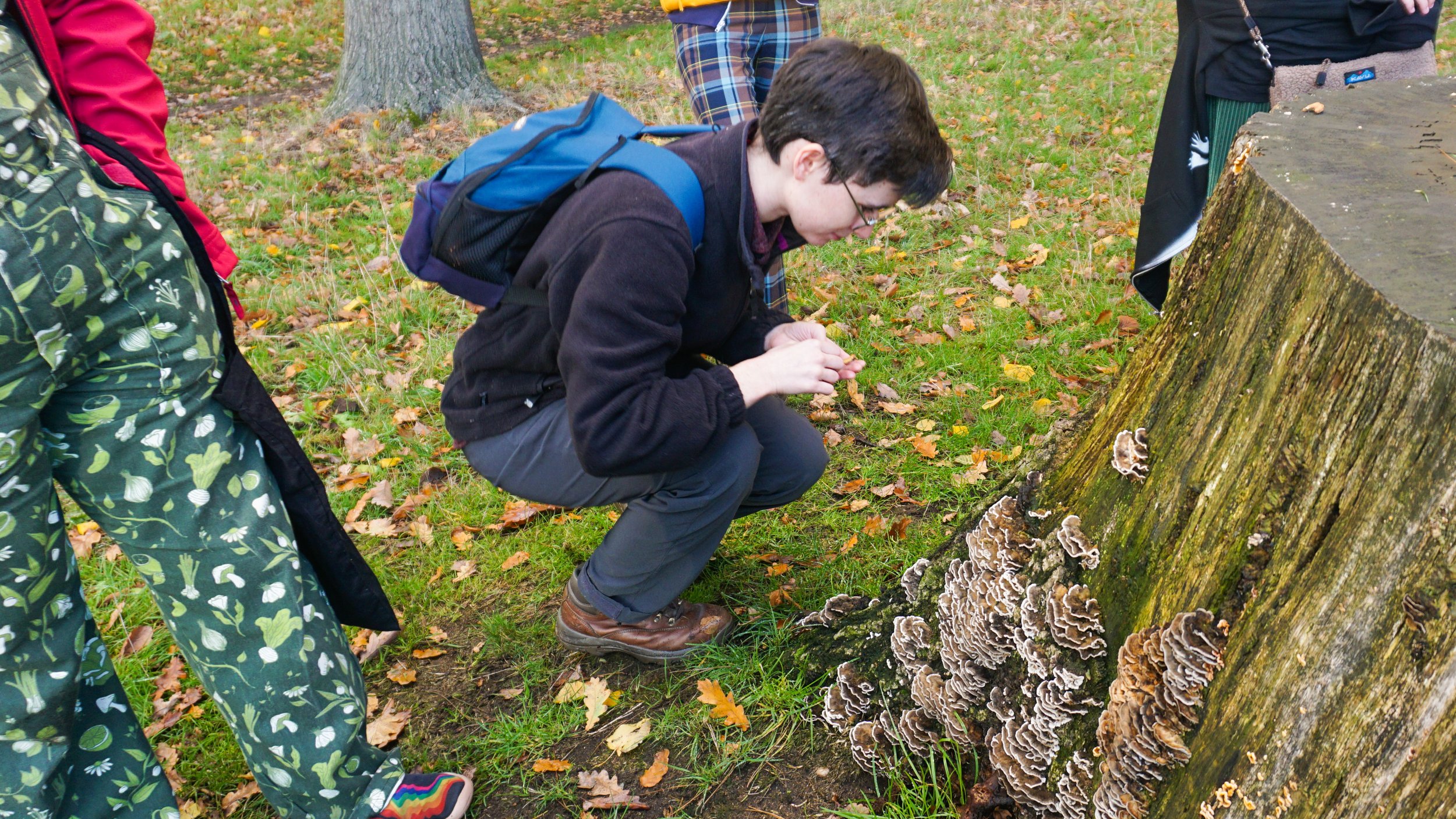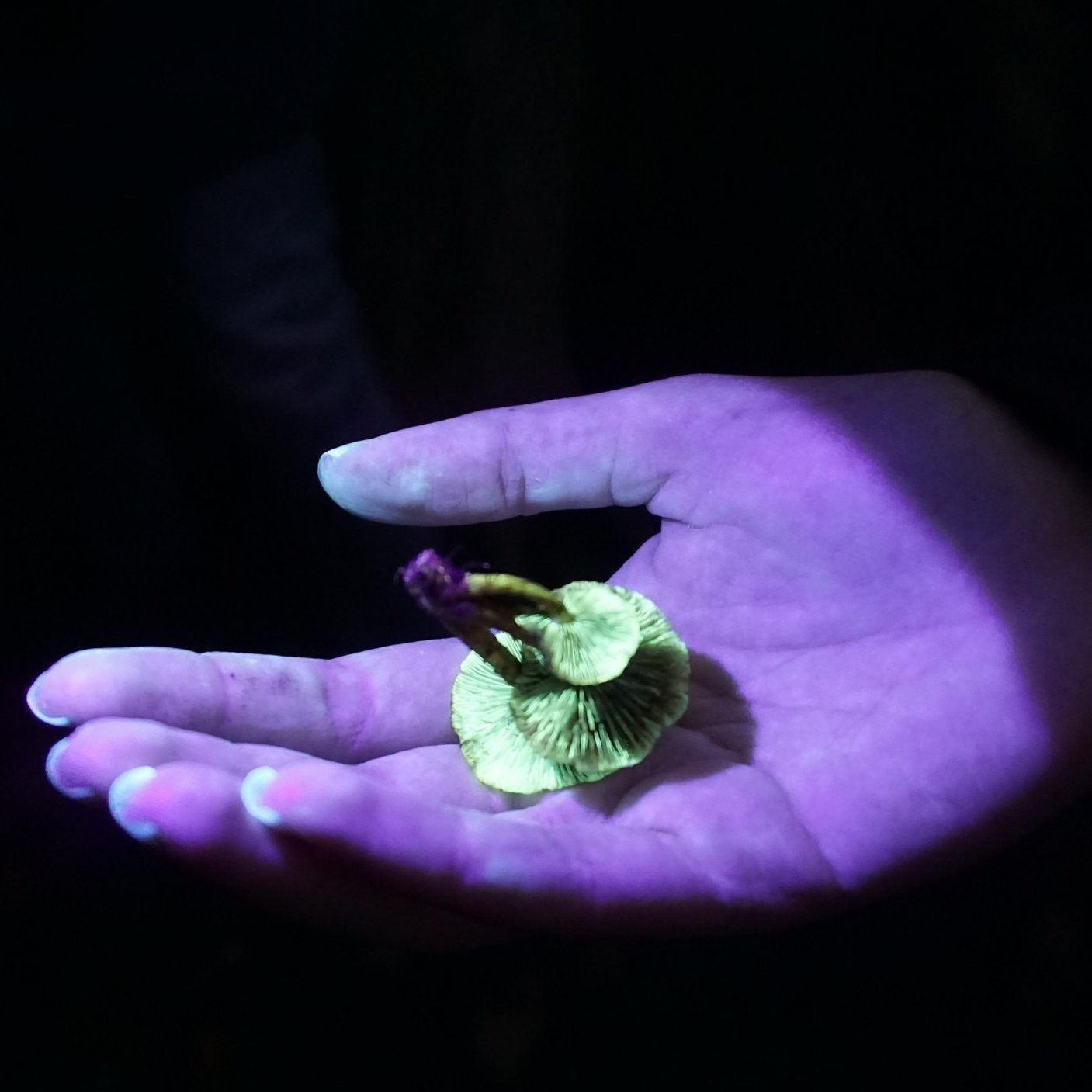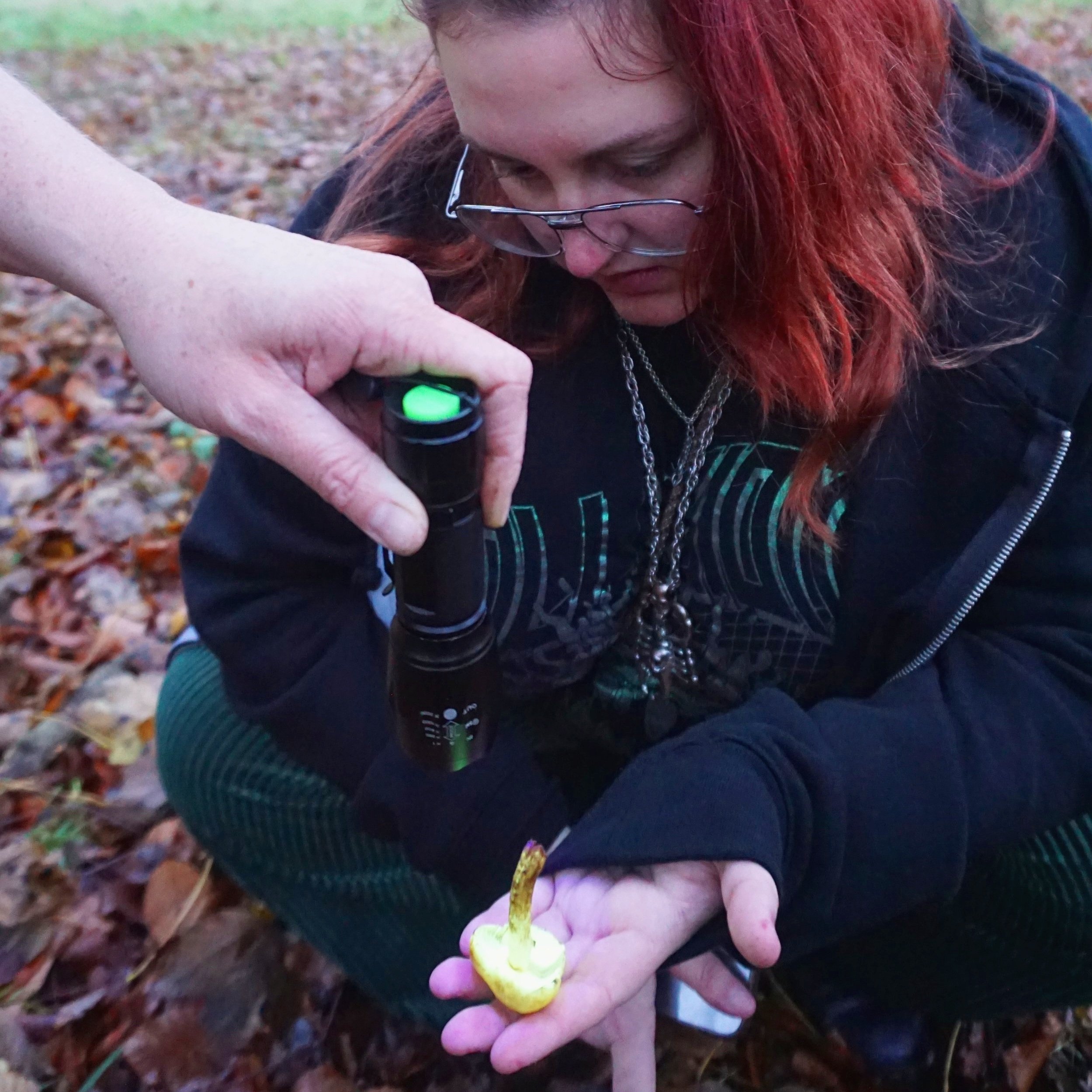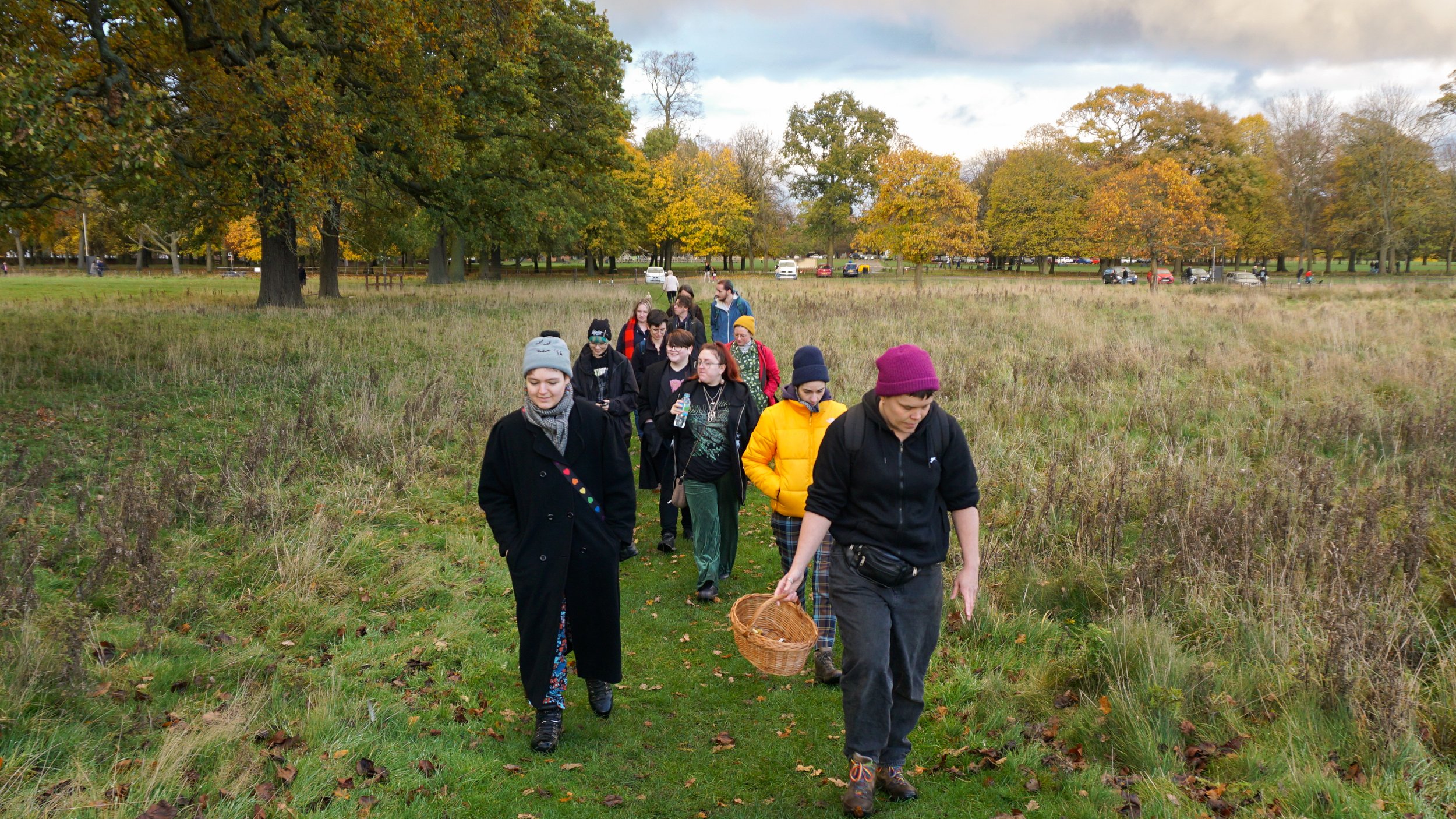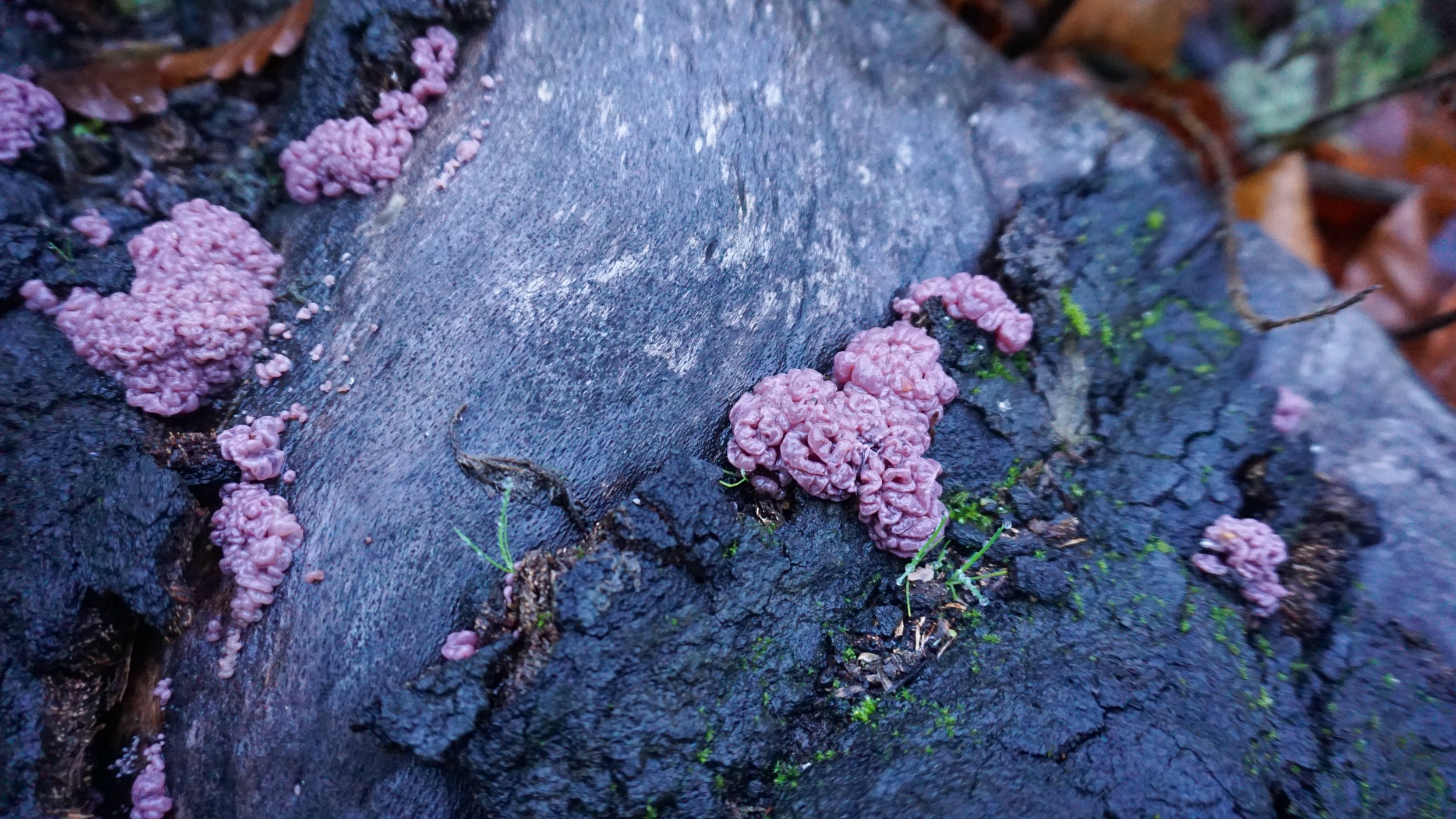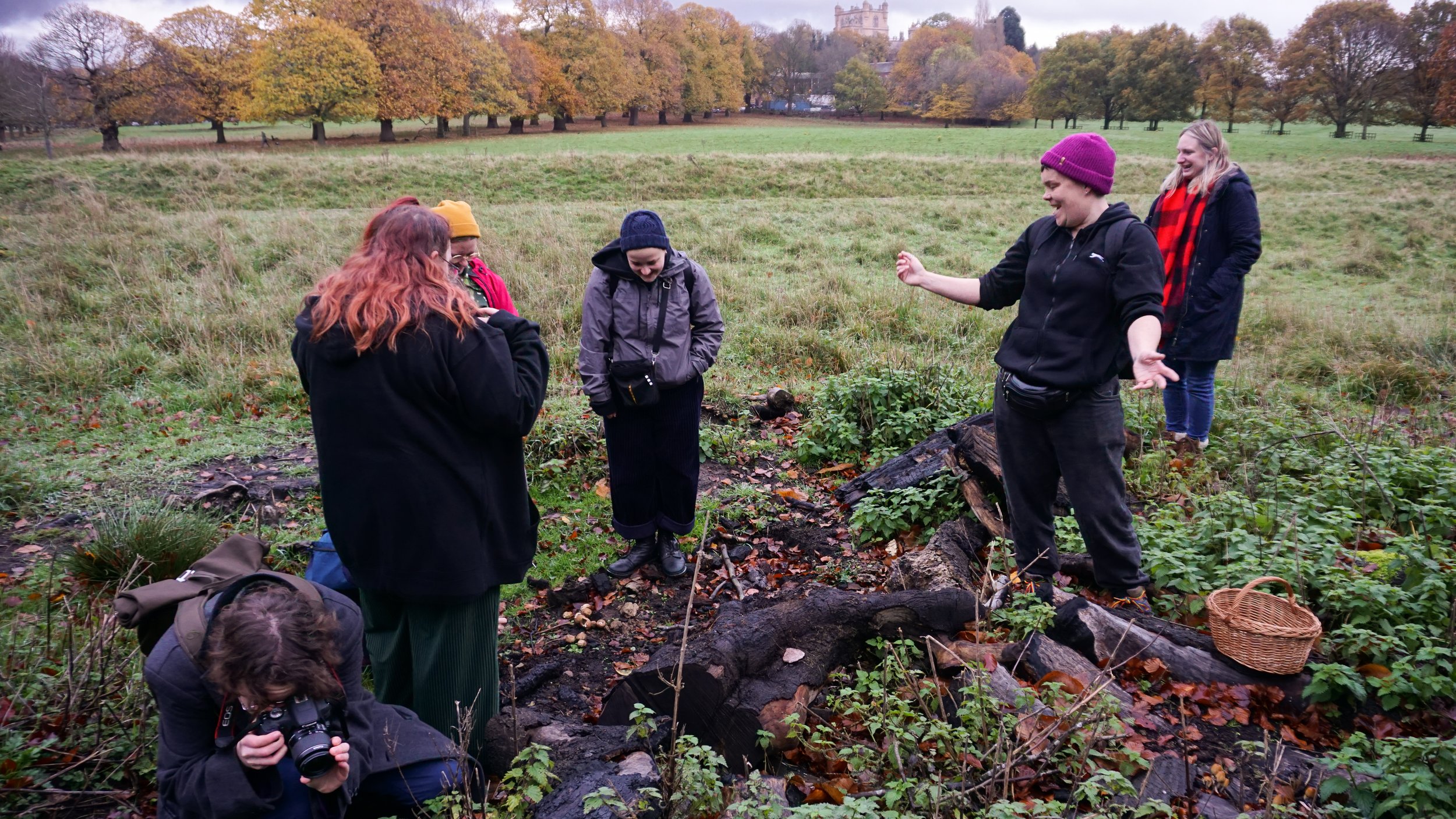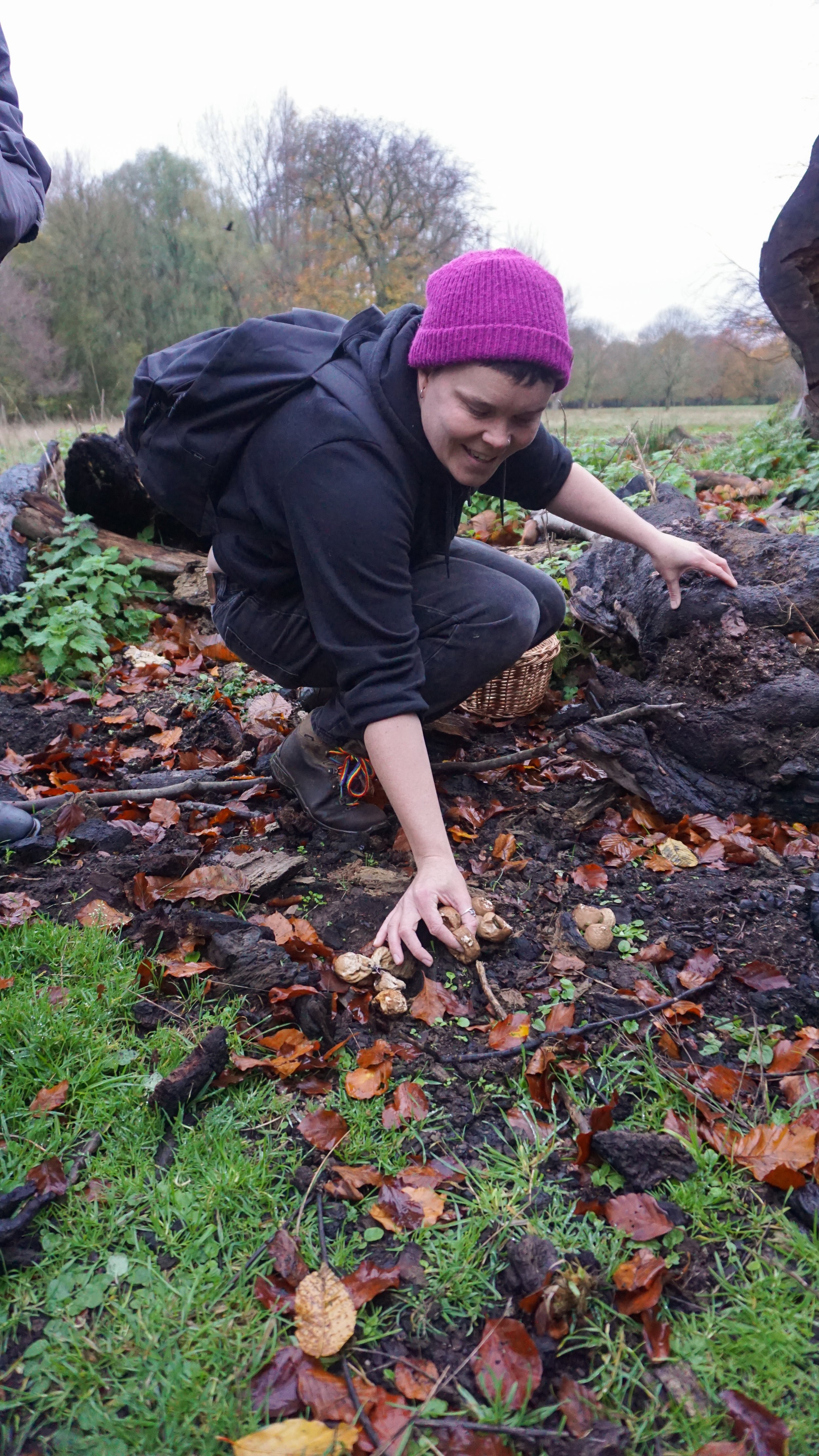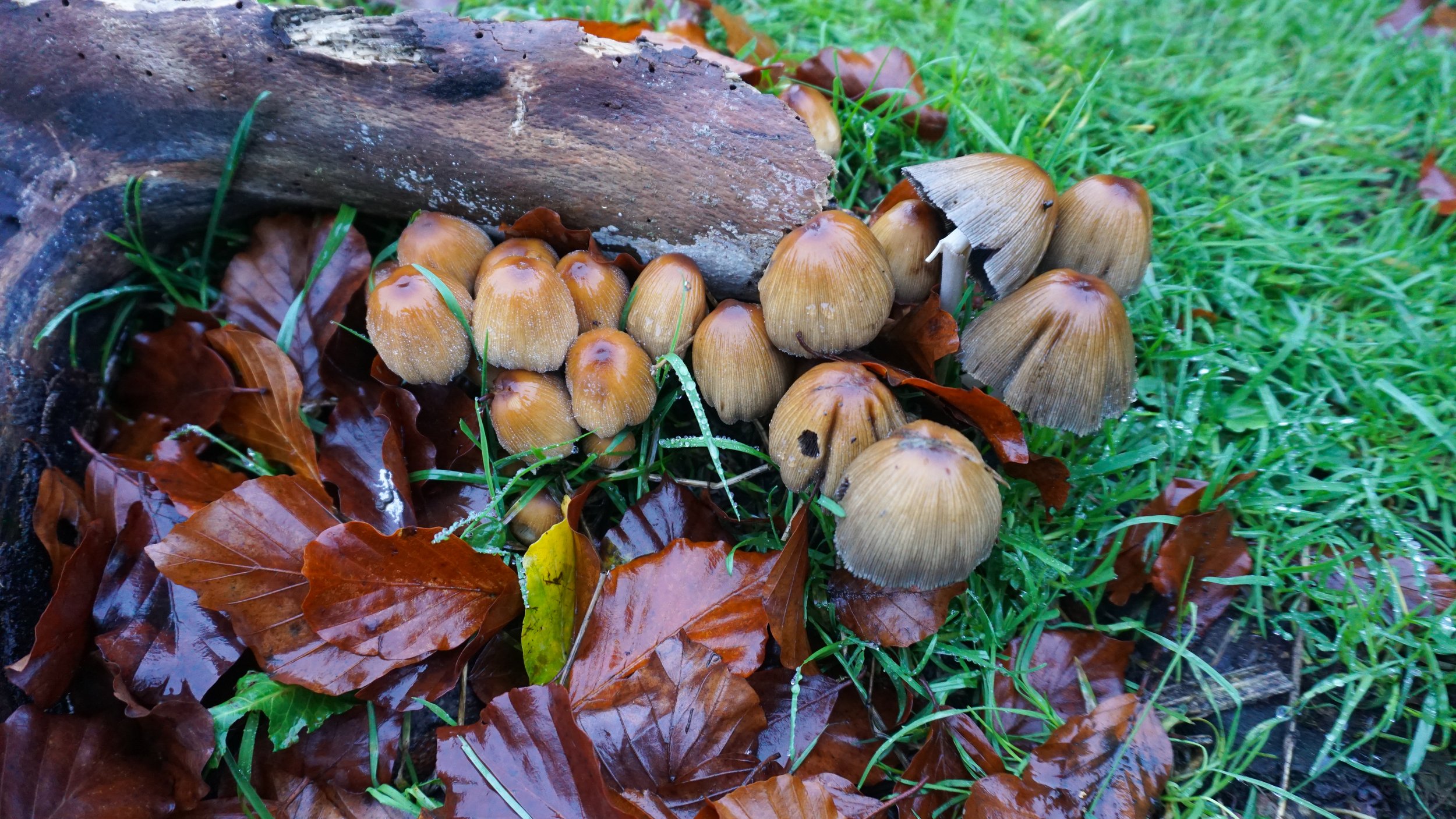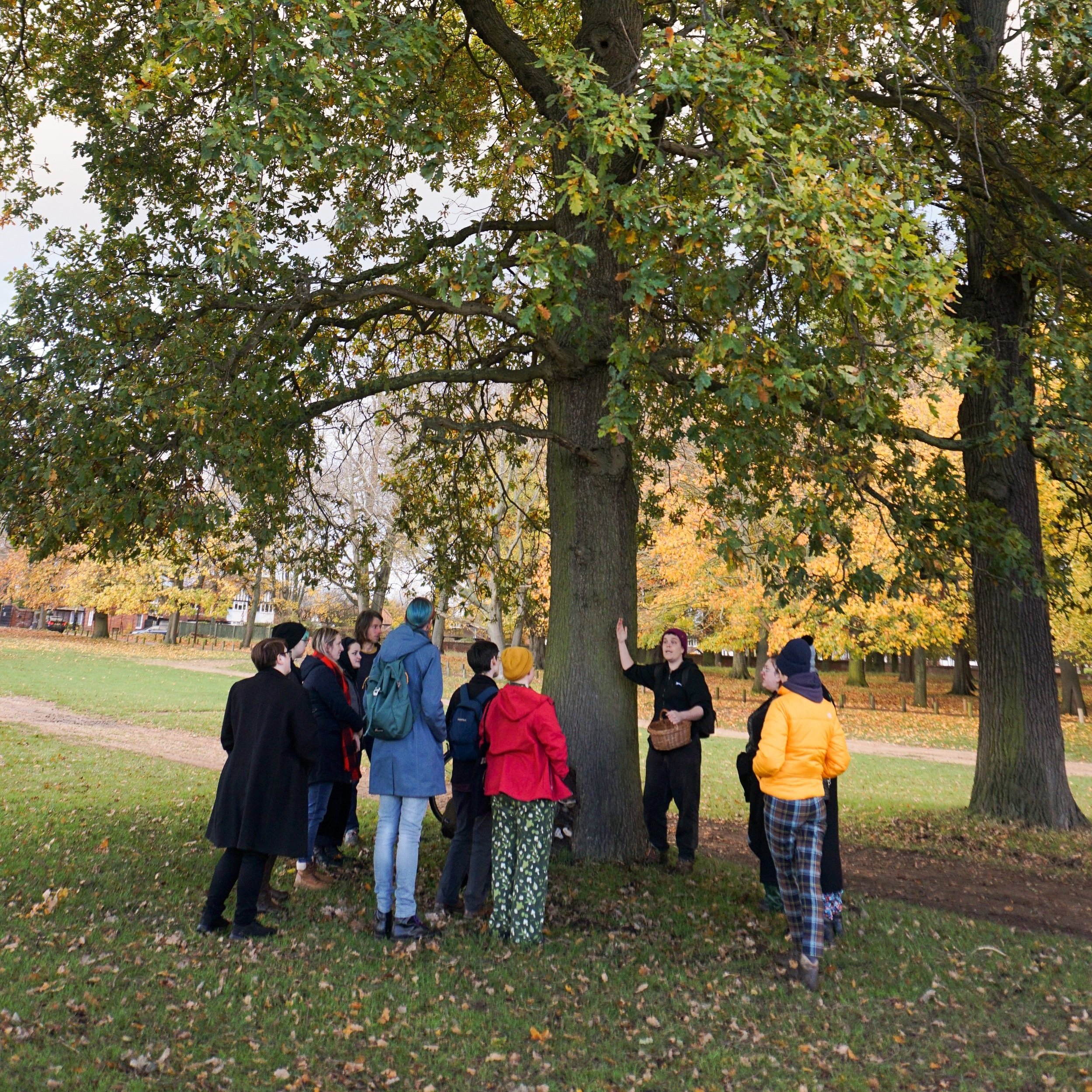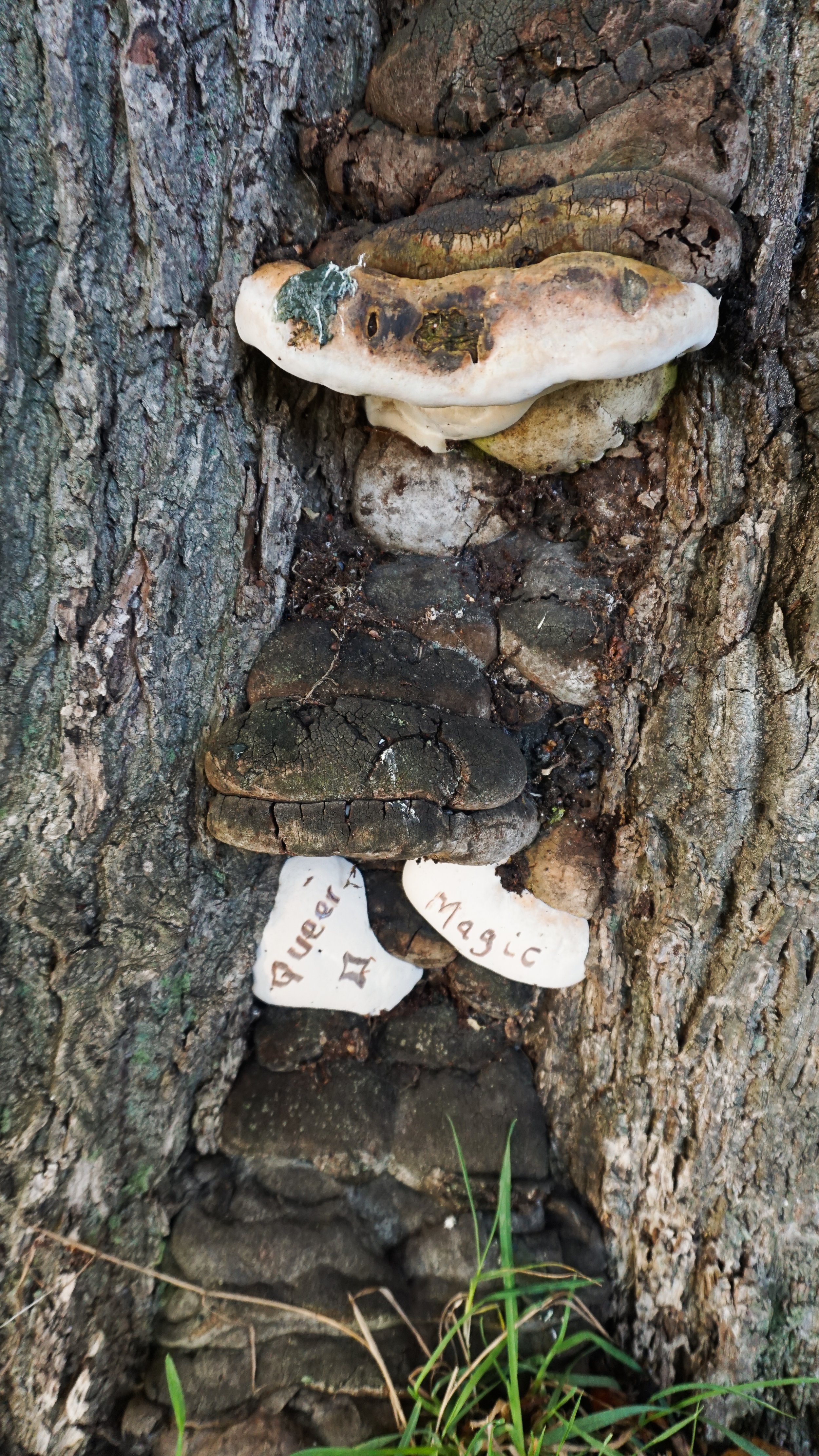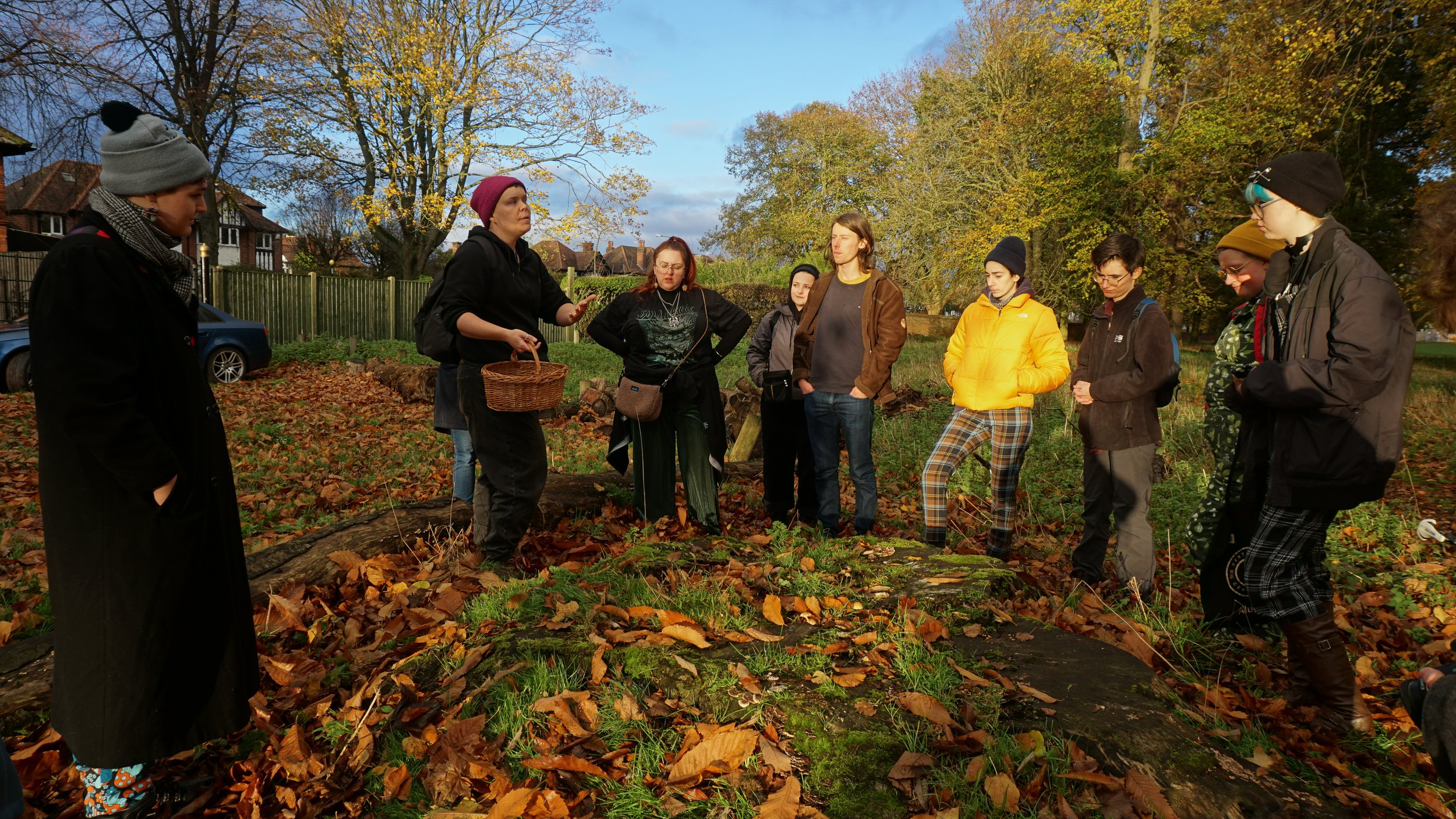Queer Mushroom Joy
Rebecca Beinart
In our 2022 Autumn season of Nourishment, a group of LGBTQ+ young people led by forager Susy started out over Wollaton park for a day of discussing queer ecologies, puffing puffballs, and admiring slime moulds!
After the walk we discussed how funghi queer nature and collaged using mushroom imagery. Discussions ensued on how we can build more joyful communities with mycelial help accompanied by Birch Polypore chai and delicious mushroom pizza prepared by Kim at Small Food Bakery.
Susy (they/them) runs Queer As Funghi leading foraging walks and creative workshops for trans, queer and intersex people. They are interested in how our relationship with nature can be a symbiotic one, and how it intersects with community care and mental health. They work as a gardener and an art therapist, as well as continually growing, identifying, and learning about mushrooms and plants.
Below is a reflection of the themes that ran through the event and were discussed by Susy and the group on the day. Questions, strategies and explanations for these interspecies relations - comparing and using the world of funghi as a lens through which to discuss and queer our understanding of the world around us.
Reflections From Susy
Learning with funghi, through a queer ecological lens, is an antidote to queerphobic and transphobic ideas that we still find inflaming our bodies, our societies and our culture. The reproductive strategies of funghi disrupt the colonial pretence of there being a ‘natural’ gender binary while mycorrhizal networks challenge capitalism and saprotophs remind us how needed transitions are.
What’s more, embracing the slimiest, wobbliest funghi can suggest strategies for overcoming our socialised fears of things deemed disgusting by cis-heteronormative, mycophobic cultures. If we can learn to find joy in the tremble of a tremella fungus, and desire to do it again, we can learn to follow these desires all the way to queer sex, DIY transitions and gender ambiguity, untouched by societal shame. Fungal play can liberate our own queer desires!
Decomposition
With this in mind, we walked through Wollaston Park, and found queer beauty and sensory joy in all the fungal beings we encountered. First we thought about decomposition and, with a camp embrace, stroked the wood rotting smoky brackets, the turkey tails, the inkcaps and the rot fungus that we have been told are queer and dirty. In sensory delight, we reclaimed and admired our fungal kin’s beautiful queer bodies.
And it’s not just superficial - their beauty is in their work too! Their labour is undervalued! The decomposers, those rotters, are busily engaged in reproductive labour. We do the dishes, they do the rotting. Both leave things better for all of us and both are unappreciated by society at large. Indeed, so unacknowledged is the reproductive labour of decomposers that it must be a form of activism to affirm them – a fungal form of wages for housework! How would we compensate them for their time, I wonder? Is it composting? Leaving dead wood piles for them? Litter picking? Educating ourselves about land stewardship?
Magic
Daydreaming about all sorts of rotten things, we moved into the grassy fields of Wollaton Park, and succumbed to the mycelium’s queer magic. Fairy rings were all around us, and we looked for medicinal mushrooms peeking out through the grass. As we found them, we recognised the kinship between witches, fairies and mushrooms. Healers, maligned, magical.
Recent scientific studies show the significant positive impact of psilocybin on low mood and anxiety, although Maria Sabina already knew this! We’re told the witches used Amanita muscaria to help them fly, and we know Siberian healers had ritual uses for these spotted caps. Traditional Chinese Medicine is full of ancient fungal healing, and Algerian shamans were using psilocybin containing mushrooms as long as 9000 years ago. Magical folk across the globe knew that healing came from the land around us, which means that we can seek to recover their lost knowledge through rebuilding our reciprocal relationship to nature, through curiosity, daydreaming, creativity and magic. We got a glimpse together, between the fairy rings, of mushroom magic.
Cruising
Tingling all over with fungal enchantment, we brought our awe and play to the woods. In the gayest tradition, it was time for shroom cruising, where we all spent time getting to know the wooded area, engaging in sensory encounters (if we wanted!) with the beings we met, and seeking joy in our desiring connections with these beings. Together, we rubbed purple jelly discs, blew peziza cups until they released their spores and winked at Molly eye winkers. Decentring the human, and learning how to love and desire our fungal kin, so hot!
There’ll be more shroom cruises in 2023, I can’t wait for the debauchery! Thank you to everyone, human, fungus or plant, that walked, cruised, made magic and decay with us in Wollaston Park. Keep shroomin’ queerdos! - Susy (@queerasfunghi)

